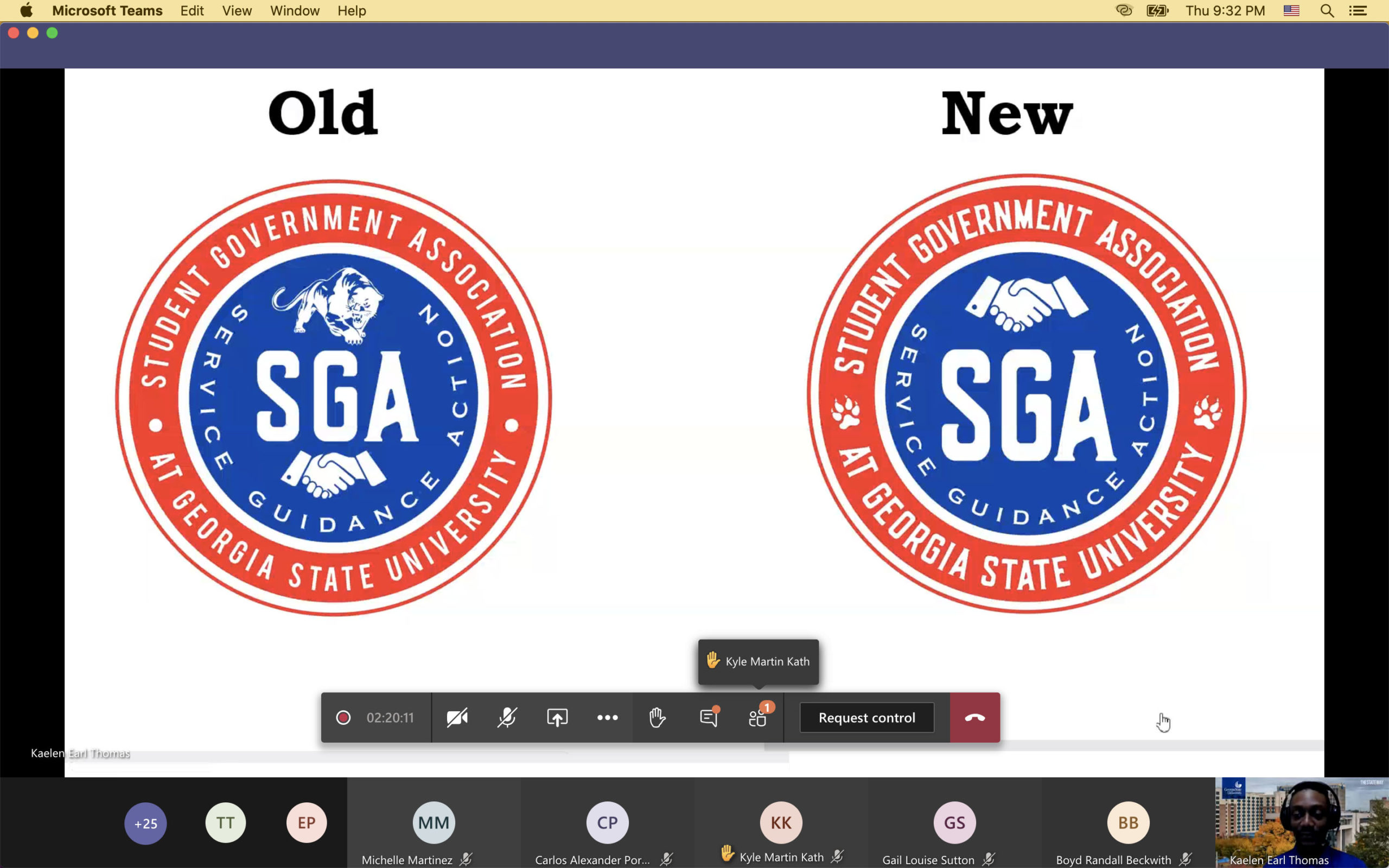
At the Oct. 8 Student Government Association University-Wide Senate meeting, SGA members finally voted on a new logo.
Following this new decision, all SGA members have recently decided to take steps.
“We will now move on to our first item under old business, which is the SGA logo,” SGA University-Wide President Kaelen Thomas said at the meeting. “So, SGA has been working towards creating a new logo … and revis[ing] the logo design that was voted on at our last University-Wide Senate meeting. We have one logo design to vote on tonight.”
According to Gail Sutton, the SGA advisor at the Atlanta campus, the association changed its logo because of its changing partnership with Georgia State.
“SGA is developing a new brand identity. As an organization, SGA has recently been changed to a Registered Student Organization (RSO) rather than a university department,” Sutton said. “RSOs are not permitted to use the university logos or other wordmarks on their materials, which is what prompted them to craft a new logo.”
Georgia State now recognizes Registered Student OrganizationsRegistered Student Organizations are now recognized by universities yet still are not overseen by the school.
Executive Vice President of the Newton campus Carlos Porter said that SGA is still transitioning.
“Our relationship is changing as well, and who we answer to is different,” Porter said. “As of right now, there are certain things we want to do, but we are limited by the university’s oversight. Now, with this change, we’ll have more leeway.”
Previously, the association was directly linked to Georgia State, causing SGA to be limited by what Georgia State deemed appropriate. Executive Vice President Takia Tinsley said that SGA revised its logo to reflect its now indirect extension to Georgia State.
“[This created] the need for a new design that did not utilize the iconic [Georgia State] flame,” Tinsley said. “We spent extensive time designing and voting upon the current logo design.”
At the beginning of the redesign process, members of SGA submitted their own logo designs. But according to EVP Porter, there were many conflicts throughout the meeting, including some members disagreeing on why their designs were not chosen.
SGA then created a five-person committee to spearhead the design process.
“The hope is that this new logo will be around for several years before any change is necessary to it,” Sutton said.
BeforePrior to this change, this logo was only used on the SGA Panther Involvement Network page, the university calendar and news posts distributed through PIN. Now, this logo represents SGA across all social media platforms.
“You should see a change to the logo used on the SGA social media platforms,” Sutton said. “Our University-Wide Communications Director has recently resigned, and he was the primary administrator of the SGA social media sites. Access to the administration of SGA social media sites is being reassigned in the next day or two.”
From virtual meetings, resigning members and an organization redesign, SGA has experienced many changes this semester.
“There have been some minor hiccups in our promotional material being completely updated, as we want to be thorough and precise with how we conduct ourselves going forward,” Tinsley said. “We took some time to decide upon this logo and have only recently concluded upon the design that you have seen. We plan to utilize the logo going forward with our projects for the remainder of this semester.”
The committee agreed to remove the flame, the panther or any other emblem that reflects the university.
“In addition to no longer utilizing the [Georgia State] flame, our organization now operates on the same level as other student-chartered organizations,” Tinsley said. “Basically, any hurdles or walls we may have run into within previous administrations, in terms of how to conduct certain missions, have the chance to dissolve within this rebranding. It is a new year, and there is a new SGA.”
EVP Tinsley said that though the association is becoming its own entity, SGA’s goals remain the same.
“Our goals and initiatives have not shifted. We are here to serve as a resource to the students, forever and always,” Tinsley said. “We have simply moved more toward having an identity as an SGA entity that is not as directly associated with the university, mirroring that of other chartered student governments at other schools.”
Both Tinsley and the SGA Senate want to encourage more community engagement and more communication between SGA and the students.
“We want the student body to recognize and be able to access the folks that they all elected into these student leader positions,” Tinsley said. “We want to do this by promoting even more community involvement for our team, having them go to the students and seek endeavors rather than wait for the students to come to us. This will show in both virtual and physical aspects.”
Transitioning into a new way of operating, SGA will continue to consider the implications COVID-19 will have on the university and its in-person events.
“We have recently begun explor[ing] how more in-person activities may be possible on campus in the near future, as many students are expecting the virus-affected campus life to somehow magically return to normal by the spring semester,” Tinsley said.
He, too, wishes that the virus would go away and Georgia State soon returns to normal. But he remembers that it is SGA’s responsibility to prepare for any possibilities in the upcoming semester.
SGA began hosting some different “trial-run initiatives” and activities that require masks, sanitization and social distancing measures.
“It is hard and taxing, but we are striving to identify what avenues will provide the most exciting, safe and memorable college experience for Georgia State’s Panthers,” Tinsley said.
